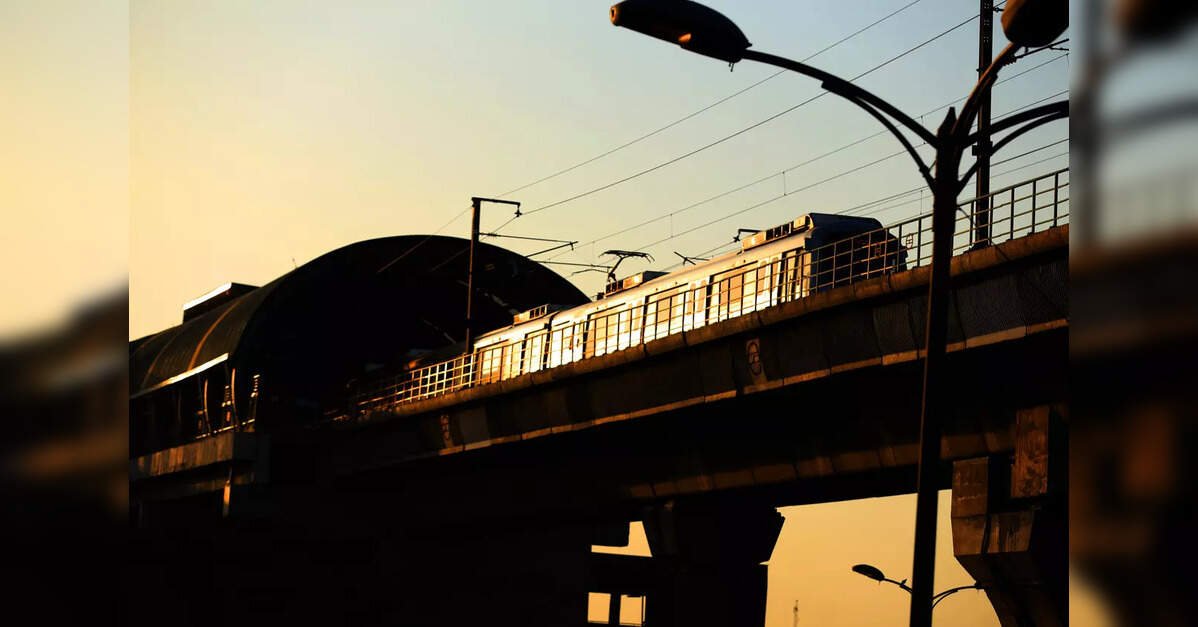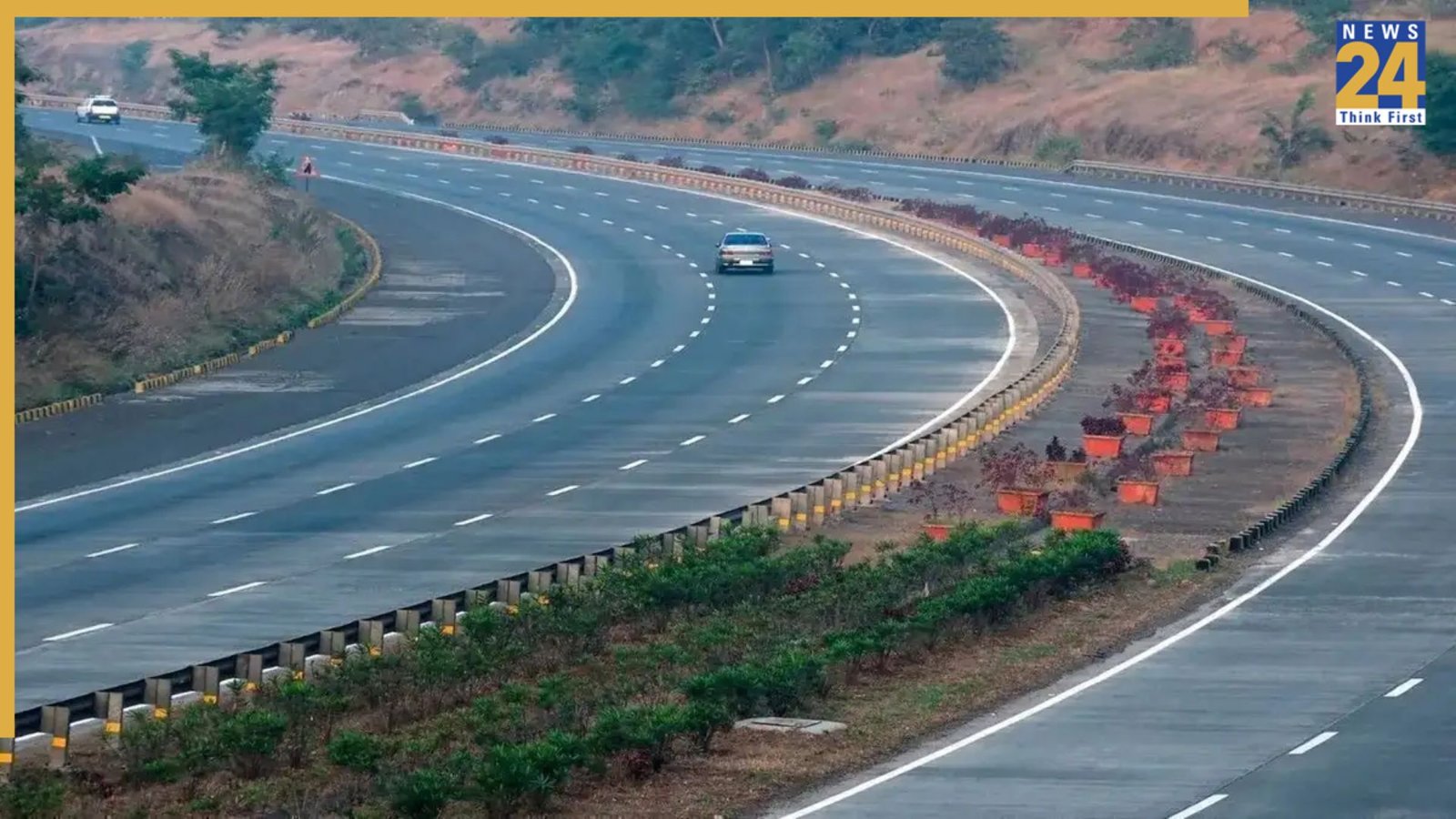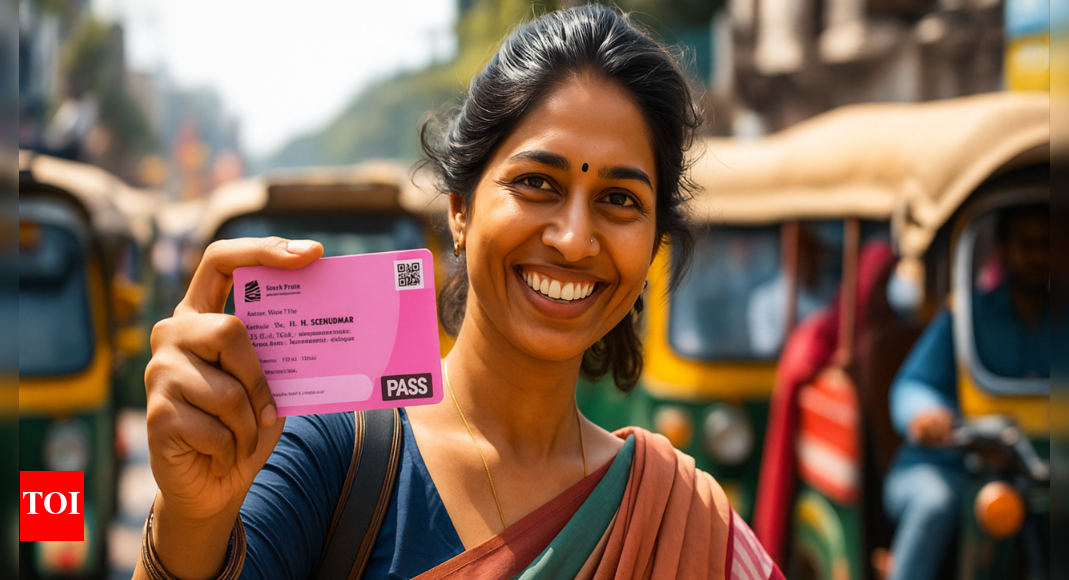Travel Guides & Articles
The Future of Indian Metro Systems, ETInfra

Imagine a modern metropolis landscape and it will perhaps comprise of three things: Skyscrapers along the horizon, vehicles on the road and overhead metro rail system. But travel back in time, a few decades, when India’s oldest metro rail in Kolkata was flagged off; it covered only a few kilometres and was more of a novelty than a choice of rapid transportation.
Fast forward to 2025, and trains have evolved into sleek, high-tech marvels. Today’s metro systems aren’t just modes of transport; they are sophisticated, eco-friendly gadgets designed to redefine the commuting experience. With futuristic exteriors and tech-infused interiors, modern metros promise not just speed and efficiency but also an unparalleled level of comfort, safety, and connectivity.
The transformation in design has been more than just visual – it reflects a profound shift in how cities in India are tackling urban mobility challenges, creating smarter, more sustainable transit solutions for millions of commuters every day.
Contemporary and regional design elements
Modern design approaches railway carriages with a nuanced perspective, leading to contemporary and regional design elements being incorporated into Mumbai and Agra’s metro cars.
For instance, metro trainsets for the Mumbai Metro Rail Corporation are custom designed with Mumbai’s vibrancy and tempo in mind. They’re themed around dynamic fluidity, which reflects the undying energy of Mumbai and its people who are always on the move. In addition to capturing the city’s spirit, trainsets are designed functionally by prioritizing a high-density layout to maximise space.
Similarly, Agra’s metro trains draw inspiration from Uttar Pradesh’s rich and ancient heritage. This blend of tradition and cutting-edge design has resulted in an attractive look for the city’s metro fleet, enhancing functionality and aesthetic appeal.
Passenger comfort remains crucial to increasing metro ridership. Passengers, who may spend as much as four hours every day inside a metro train, expect to be as comfortable as possible, making trainsets’ aesthetics and design essential. The good news is that advancements in rail design have made cars more appealing and comfortable than ever before.
Designed for comfort and convenience
To aid passenger comfort, metro cars of today are packed with convenience as well as accessibility features. From ground-level access, ensuring ease of entry for diverse commuters, including the elderly and disabled, to well-lit interiors using energy-efficient LED lighting, meaningful alterations have been made over time. For example, Smart Lighting reinforces positive passenger experience by adding to comfort and safety. It automatically adjusts the interior lighting (intensity, colour, temperature) according to the level of natural light, weather, time of day, season, passenger density, etc.
In response to the proliferation of mobile devices and laptops, cars now have power / USB sockets. Moreover, in the post-pandemic world, where remote work is widespread and digital connectivity is expected, these modifications enable travellers to remain productive, connected, and entertained, while on the move.
However, while the features might be meaningful for urban commuting, the design of high-speed semi-regional trains is completely different.
With special focus on passenger experience, the modern interior design features optimised comfort and connectivity as well as easy access and innovative passenger information systems. These cars feature dynamic route maps that provide passengers with pertinent information about their journey and estimated arrival time.
They are equipped with intelligent indoor lighting which detects the train approaching and departing a station, making entering and exiting trains easier. The large windows offer a panoramic view making the interiors airier and more spacious. There are ergonomically designed areas that not only support differently-abled people but also help during medical emergencies.
Further, with an aim to optimise maintenance, carpeted flooring has been replaced with more durable materials, like rubber. These are easy to clean and repair, fire-resistant, slip-resistant, sound-absorbing, and recyclable, making it ideal for modern trains that operate long hours transporting thousands of passengers, their belongings, and perishables daily.
The use of sustainable materials in modular design reflects a shift toward environmental responsibility while maintaining passenger comfort. This change in carriage design aims to balance new technology, recyclability, durability, and the flexibility required to meet the evolving needs of modern rail travellers. Modern metro systems are eco-designed for higher sustainability, with a focus on high recyclability, recoverability rates of materials, and lightweight design to increase energy efficiency and minimise environmental impact.
Emerging trends in urban mobility
Today, most of the 100 per cent ‘made-in India’ metro systems use advanced technologies that ensure continuous operations, improved safety, reduced maintenance costs, and future-proof design. These trains are also supported by a Communication-Based Train Control (CBTC)-based signalling system, to ensure safe and reliable service. It also helps achieve fully autonomous train operation which has become the mainstream design for new metro lines.
Public transport operators and authorities are looking to improve the travel experience and to create new sources of revenue. The high-resolution LCD/LED based digital infotainment screens in trains with options to have pre-recorded / live feeds offer a good option for non-box revenue.
Metro trains are also integrating advanced video analytics to detect unusual incidents, such as unattended objects, empty train detection (while returning to depot) and many other use cases to enhance security. For instance, advanced algorithms are used to identify unattended bags, articles, and other potential hazards, triggering alarms for operator and control centres.
In addition, enhanced cyber-security, intelligent troubleshooting and predictive maintenance features are being offered that reduce costs, avoid breakdowns, increase the efficiency of rail traffic and improve overall system performance.
The track ahead
Considering travelling by metro is the fastest, safest, and most affordable way for people to commute to work, it’s only natural that metro cars are designed around passenger comfort.
Robust air-conditioning, speed, safety, affordability, and comfort are behind the popularity of metro services in India, which are increasingly adopting driverless train operations, emergency evacuation systems, and noise reduction protocols.
As we look to the future, the integration of contemporary and regional design, and cutting-edge technology will continue to redefine the commuting experience while addressing the latest challenges and opportunities for society, the economy, and our climate.
(The author is Baskar Nagarajan, RSC Engineering Director, Alstom India. Views are personal.)
Travel Guides & Articles
Travel Meerut To Prayagraj In JUST 6 Hours News24 –

The work of the Ganga Expressway, being constructed from Meerut to Prayagraj is now moving towards completion. Especially in the Hasanpur tehsil of the Amroha district, this expressway has been completely completed. Now, only the final work is going on, which is almost complete. It is expected that vehicles will start running on this route in the coming month.
The construction of a 23.60 km-long expressway in the Hasanpur area is planned to be completed by 12 October 2025, although road construction and lighting work have already been completed here. The work of laying a pipeline for drainage of rainwater has also been completed.
An overbridge and T-point have been prepared on the Hasanpur-Rahra road in Mangrola. Four toll plazas have also been built on both sides of this T-point. Apart from this, the construction of the bridge over the Ganga River in Pandapur has also been completed.
Officials say that some finishing work was stopped due to rain, which will be completed within the next one month. At the same time, sources say that the 594 km-long Ganga Expressway extending from Meerut to Prayagraj will be opened in the month of November, as reported by Jagran.
With the opening of the expressway, it will become very easy to cover the distance from Meerut to Prayagraj. People of Amroha will also get convenience in traveling to both the cities. This route will prove to be very useful for the devotees coming to the Tigri fair from Prayagraj and nearby districts. Also, devotees of Meerut, Hapur and Amroha will now be able to reach Sangam bath easily.
Apart from this, lawyers and litigants of western Uttar Pradesh will get great relief in reaching the Prayagraj High Court. They will be able to leave their home in the morning and return the same day after pleading their case in Prayagraj, as per media reports.
Travel Guides & Articles
A grown-up guide to India: How to ace the Golden Triangle and Mumbai – London Evening Standard

A grown-up guide to India: How to ace the Golden Triangle and Mumbai London Evening Standard
Source link
Travel Guides & Articles
Delhi’s Bhai Dooj gift: Pink Card registration to begin from mid October; free bus travel for women

The Delhi government is set to launch the registration process for its Pink Card, a lifetime free bus travel pass for women, from mid-October, as a Bhai Dooj gift to the women of the national capital.According to a senior transport department official, the Pink Card will be valid for a lifetime and aims to make public transport easier and more accessible. The initiative will replace the existing paper-based ticket system with the ‘Saheli Smart Card’, described as a permanent and personalised pass designed to provide women with unrestricted and secure travel on government-run buses.He said registration for the card is expected to begin in October, allowing “Delhi’s daughters and sisters to avail unlimited free travel as a token of the government’s commitment towards their welfare.” The exact launch date and procedure will be finalised in a meeting scheduled for the coming week.The card will also enhance safety and reduce inconvenience by eliminating the need for daily paper tickets, offering instead a hassle-free smart card.Plans for the Saheli Smart Card were first outlined in July. At the time, officials confirmed that it would carry the holder’s name and photograph and would be available to women and transgender residents of Delhi aged 12 years and above. The card, issued under the National Common Mobility Card (NCMC) framework, will allow free travel on all DTC and Cluster buses and can also be recharged and used across other transit services.“To obtain the card, applicants must be bona fide residents of Delhi, aged 12 years or above, and have valid proof of address. They must register online through the DTC portal, select a participating bank, and complete full KYC verification at the chosen bank branch,” the official told PTI.The list of required documents includes Aadhaar, PAN, proof of residence in Delhi, a passport-size photograph, and any additional paperwork specified under the bank’s KYC norms. Once the KYC process is completed, the issuing bank will dispatch the card directly to the applicant’s registered address.The Delhi government has invited Expressions of Interest (EoI) from banks and financial institutions to support the card’s roll-out. Officials clarified that while the government will not charge users for the free travel scheme, banks may impose a small fee for issuing or maintaining the card. In the event of loss, the cardholder must inform the issuing bank, which may replace it under its own policies.Before it can be used, the card must be activated through the Automatic Fare Collection System (AFCS) of DTC. While topping up will enable use across other public transport services, the free travel facility will apply only to DTC and Cluster buses.“No card will be issued directly by DTC. Registration is completely online through the DTC portal, and cards are issued only after full KYC verification by the selected bank,” the official added.The chief minister has previously criticised the old pink ticket system, introduced under the AAP government, arguing that it was prone to corruption.
-

 Business2 weeks ago
Business2 weeks agoThe Guardian view on Trump and the Fed: independence is no substitute for accountability | Editorial
-
Tools & Platforms1 month ago
Building Trust in Military AI Starts with Opening the Black Box – War on the Rocks
-

 Ethics & Policy2 months ago
Ethics & Policy2 months agoSDAIA Supports Saudi Arabia’s Leadership in Shaping Global AI Ethics, Policy, and Research – وكالة الأنباء السعودية
-

 Events & Conferences4 months ago
Events & Conferences4 months agoJourney to 1000 models: Scaling Instagram’s recommendation system
-

 Jobs & Careers2 months ago
Jobs & Careers2 months agoMumbai-based Perplexity Alternative Has 60k+ Users Without Funding
-

 Podcasts & Talks2 months ago
Podcasts & Talks2 months agoHappy 4th of July! 🎆 Made with Veo 3 in Gemini
-

 Education2 months ago
Education2 months agoVEX Robotics launches AI-powered classroom robotics system
-

 Education2 months ago
Education2 months agoMacron says UK and France have duty to tackle illegal migration ‘with humanity, solidarity and firmness’ – UK politics live | Politics
-

 Podcasts & Talks2 months ago
Podcasts & Talks2 months agoOpenAI 🤝 @teamganassi
-

 Funding & Business2 months ago
Funding & Business2 months agoKayak and Expedia race to build AI travel agents that turn social posts into itineraries

